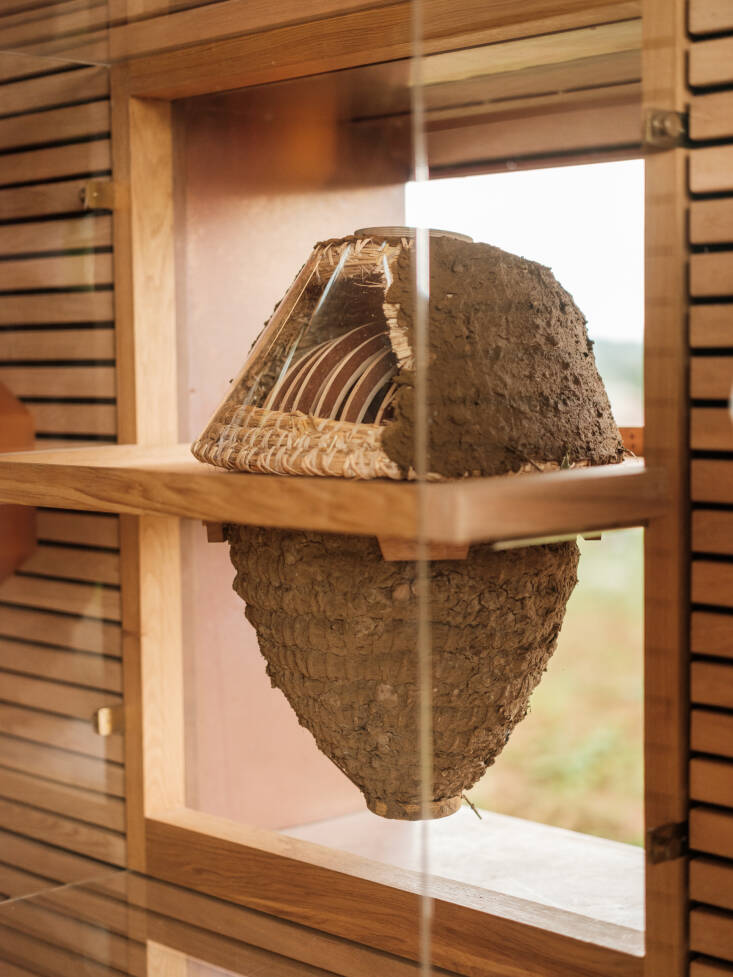It’s interesting to realize that honeybees are not native to North America. How did pollination take place, you may wonder, in the millennia before colonialism? Plants such as corn are wind-pollinated but otherwise, the system worked just fine, with the help of native bumblebees and solitary bees, as well as a whole chorus of other pollinating insects, birds, and bats. Honeybees are better at harvesting than pollinating, as they systematically work through certain species of plants, moving on when they have stripped them of pollen and nectar. They are so voracious that they leave little room for the more easygoing habits of other pollinators.
When bumblebees bizz-whizz towards the long nectary of a foxglove or luxuriate in the pollen overspill of a hollyhock, they are doing a more effective job of spreading pollen around than honeybees. Today, solitary bees (such as mason bees, which tend to live in old crumbling walls) and social bumblebees face graver extinction threats than honeybees, which are essentially farmed in vast numbers.
Turns out, becoming a beekeeper is not as ‘eco’ as you thought—unless you address the matter of food supplies and habitat for all pollinators.
Photography courtesy of the Newt.

The rise in urban beekeeping over the last few decades throws this dichotomy into sharp relief. It has been shown to be unsustainable in that its popularity is in direct conflict with the decline in urban green spaces. There just isn’t enough food to go around. A recent report on urban beekeeping in Switzerland suggests that it needs to be regulated and licensed, while the creation of useful green space needs to be factored into new urban development, an issue that has had some attention from the Royal Horticultural Society in the UK.

According to Paula Carnell, head beekeeper at The Newt in Somerset, the local eco-system can be thrown off balance when people buy bees for their new hives. “If you buy packs of bees, then you’re introducing 50,000 more hungry mouths that need feeding.” Establishing a hive in an area with plenty of forage will attract local bees and will not upset the natural balance of things in that particular area. In a city, on the other hand, food is already scarce, and beekeeping makes this worse.

Would-be beekeepers should focus instead on creating habitat as well as a long-lasting food source. One of the most vital aspects of keeping pollinators happy, says Paula, is diversity in planting, that covers as much of the year as possible. You might not think of ivy for its flowers, but late pollinators do. We could learn from wayside weeds and wildflowers: in April in the UK, there are cowslips, snake’s head fritillary, bluebells, cuckoo flower, primroses, jack-in-the-hedge—the list goes on and on. And yet many domestic gardens are just getting started, with dandelions a trigger to get mowing (when in fact they provide crucial early food).

For home gardeners, a good proportion of natives will be very helpful. “You’ve got to have things that will produce nectar in all different temperatures,” says Paula, and native plants are the most effective at that, having co-evolved with native pollinators. Plants such as comfrey and phacelia (native to both North America and the UK) are able to replenish their nectar in 24 seconds, she says, unlike a monoculture of, say, lavender. When lavender has served its purpose, it’s done, and bees need to find something else.

Paula was a consultant on creating the Beezantium at the Newt (designed by architects Invisible Studio). Bee habitats are integrated into the walls of the building, with working hives visible for visitors inside the small lakeside apiary.

The Beezantium is an educational facility, in the lead-by-example mold. There are conventional and alternative hives, in a non-judgmental display of the options available. These include skeps made of straw (above) and Freedom Hives (see Object of Desire: Wild Bee Hives).

Honeybees are well-integrated at a place like the Newt because of an abundance of forage in the immediate vicinity, as well as acres of apple trees and ornamental gardens. Mature, native trees are a vital source of pollen: easy to see in pollen-heavy willows, but less obvious in ash, oak, and sweet chestnut trees. Linden trees are nectar-laden in June, highly scented and buzzing with bees, if you care to stand under one. Since trees can take decades before they start flowering, the felling of an old tree should be given very serious consideration, says Paula, since it is not easily replaced, even with multiple young trees.

Finally, more food for thought: “One colony of honeybees will require an acre’s worth of ground plants to feed it,” says Paula. “Whereas a big, ancient, tree will have the equivalent of an acre’s worth of flowers.”
For more on pollinators, see:
- Pollinator Gardens: 8 Easy Steps to Design a Landscape with Native Plants
- Landscape Ideas: What to Plant for Pollinators? Choose Milkweed
- Monarch Butterflies Are Nearing Extinction: 5 Ways to Help








Have a Question or Comment About This Post?
Join the conversation